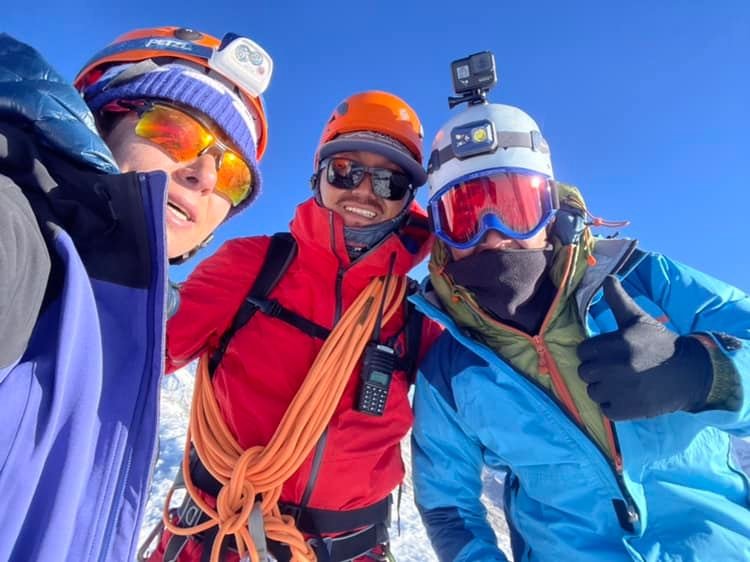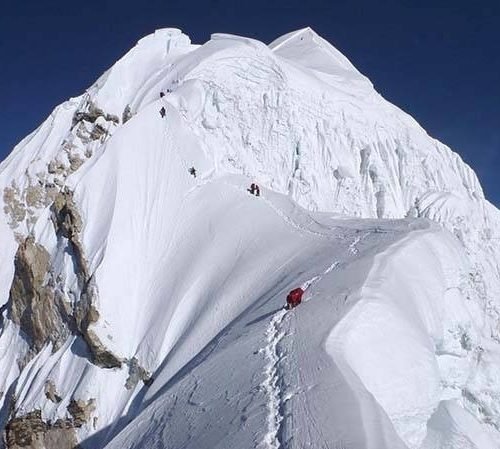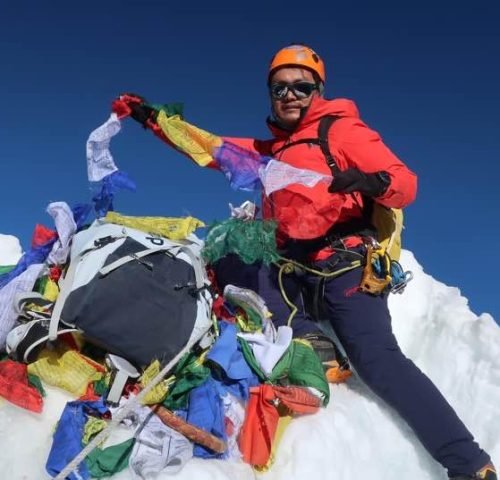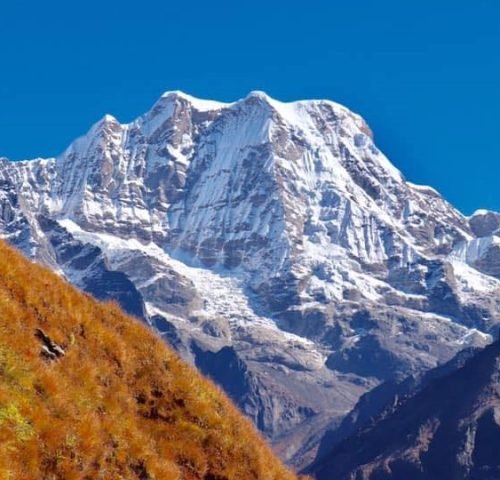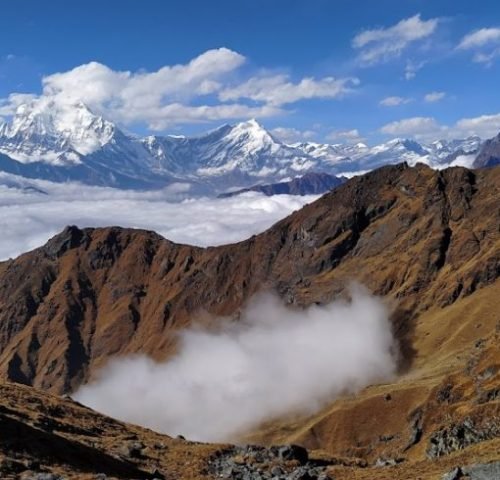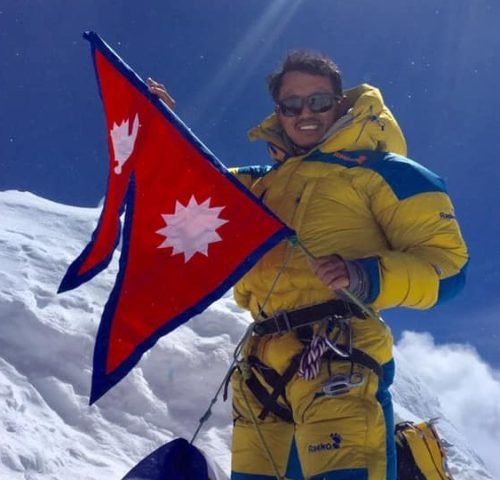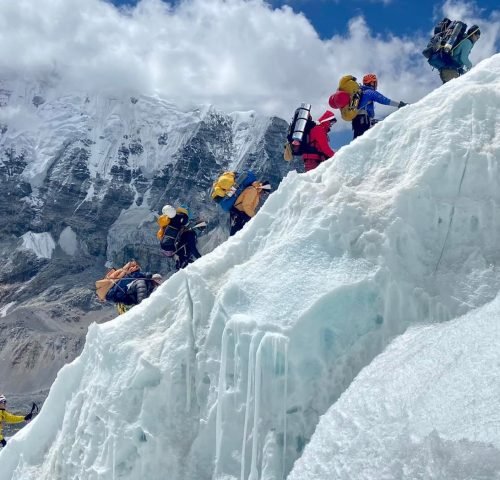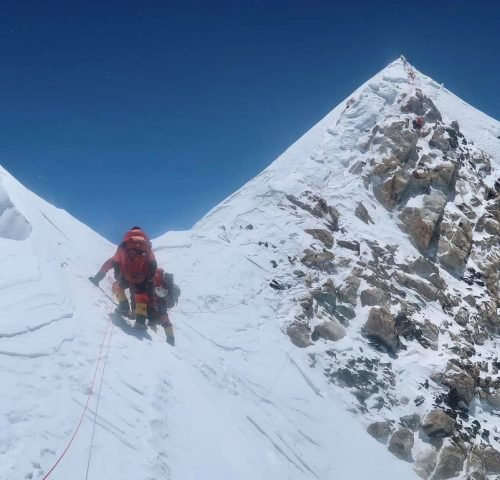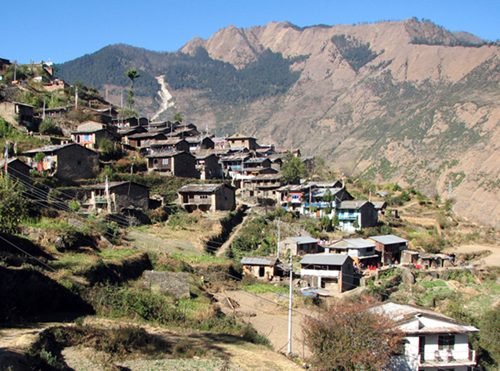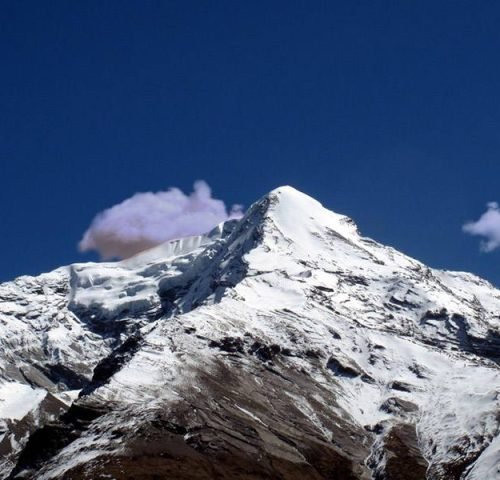Overview
Island Peak (Imja Tse) is one of Nepal's most popular trekking peak. Island peak was first ascended in 1953 by a British team as preparation for climbing mount Everest. Island Peak climbing trip fulfils the dream of every serious climber, who have been seeking the thrill of adventure and wish to take adventure climbing trips beyond simply trekking in Mt. Everest. Island peak is the most popular trekking peak in Nepal. The summit is interesting and attractive with a highly glaciated west face rising from the Lhotse Glacier.
The mountain itself is the extension of the South Ridge of Mt. Lotse Shar separated by a small col. In order to acclimatize prior to climbing Island Peak (6,189m), we trek through the Khumbu Himalayan Valley and Gokyo lake, Gokyo Ri, Chola Pass. Team members will have the opportunity (weather permitting) to ascent Kala Pattar 5555 meters a wonderful location to view and photograph Mt. Everest, then we head for a visit to Everest Base Camp. The area in and around Island Base Camp is a stunning and truly wild terrain, far from any villages. The Island peak climb is considered physically challenging, but not technically difficult.
Details Itinerary
Day 01: Kathmandu (1350). Overnight at hotel.
Day 02: Kathmandu valley Sightseeing & trip preparation. Overnight at Hotel.
Day 03: Flight to Lukla (2800M) And trek to Phakding(2600M). Overnight at tea house/guest house.
Day 04: Phakding to Namche bazar (3440M). Overnight at hotel.
Day 05: Rest/ acclimatazation (3440M). Overnight at hotel.
Day 06: Namche bazar to tyangboche (3870M). Overnight at hotel.
Day 07: Tengboche to Dingboche (4389M). Overnight at hotel.
Day 08: Acclimatization at Dingboche. Overnight at hotel.
Day 09: Dingboche to lobuche (4910M). Overnigght at Hotel/ guest house.
Day 10: Lobuche to Everest base camp and back to Gorakshep (5190M). Oovernight at hotel.
Day 11: Gorakshep - kalapther and trek back to Dingboche (43189M). Overnight t hotel.
Day 12: Dingboche to Chhukung (4730 M)- overnight at hotel
Day 13: Chhukung to Island peak base camp (4970M). Overnight at tented camp.
Day 14: Basecamp to island peak (6183 M) & back to chhukung (4730 M). overnight at hotel
Day 15: Chhukung to Dibuche (3700M). overnight at hotel.
Day 16: Dibuche to Namche bazar (3440M). overnight at hotel.
Day 17: Namche bazar to Lukla (2830M). Overnight at hotel
Day 18: Flight Lukla to kathmandu(1400M). Overnight at hotel.
Day 19: Final departure.
Cost Details
WHAT'S INCLUDED
• 3 Nights Hotele accommodations in Kathmandu at 3 star Hotel on Bed & Breakfast plan (before & after expedition).
• Airport pick up and drop up by private vehicle
• Domestic Flight Ticket (Kathmandu-Lukla-kathmandu)
• Guide and Porter
• Climbing Permit fee.
• Sagarmatha National Park Entry Permit, Local Grassland Permit Fees
• Full board in lodges during trekking and 2 nights in camping.
• Fresh Food (we serve hygienic foods) and fuel at Base Camp.
• Base Camp single sleeping tent & Mattress for each member.
• High Tents above Base Camp.
• There will be one personal professional climbing guide while climbing. one Sherpa climber for one person
• Service of cook and kitchen boy at Base Camp.
• Insurance, Equipment allowance, daily wages of cook, kitchen boys.
• 1 Expedition duffel bag for each member.
• Agency service charge and Tax.
WHAT'S NOT INCLUDED
• International airfare from/to your country.
• Nepal entry visa fee (can be obtained at the airport at upon arrival).
• Lunch and dinner during your stay in Kathmandu.
• Hotel accommodation after 4 nights stay in Kathmandu.
• Personal climbing gear and equipment above Base Camp.
• Personal insurance such as travel, accident, medical, emergency evacuation & lost luggage.
• Permit fees & customs charges, etc. for SAT phone, communication equipment & commercial filming.
• Expenses of personal nature such as drinks, laundry, postage, telephone etc.
• Tips
Map
FAQs
1. How high is Island peak Base Camp?
Island Peak, also known as Imja Tse, is located in the Everest region of the Himalayas in Nepal. It stands at an impressive height of6,189 meters (20,305 feet) above sea level.
2. How fit do I need to Climb Island peak?
To climb island Peak, it is important to have a good level of fitness and endurance. It is classified as a technical peak, so prior mountaineering experience and knowledge of using climbing equipment is essential. Additionally, you should be comfortable with long hours of trekking and be able to handle high altitude conditions.
It is recommended to engage in regular physical training before attempting the climb. This can include cardiovascular exercises like hiking, running, or cycling to improve your stamina. Strength training exercises focusing on your core, legs, and upper body will also be beneficial for the physical demands of climbing.
3. Which is the best season to Climb Island Peak ?
The best season to climb island Peak is generally during the spring (April and May) and autumn (October and November). During these seasons, the weather is generally stable, with clear skies and minimal rainfall. The temperatures are moderate, making it more comfortable for climbing. In spring, you can expect beautiful blooming rhododendron forests and lush green landscapes, while autumn offers clear views of the surrounding mountains and colourful autumn foliage.
It's important to note that weather conditions can vary, and it's always a good idea to check with authorities local or experienced mountaineering guides for the most up-to-date information before planning your climb. They will have the best knowledge of the current conditions and can provide guidance on the best time to attempt the climb.
4. What should I do if I get sick in the mountain?
If you get sick in the mountains, it's important to take proper precautions and seek medical assistance as soon as possible. Here are a few things you can do:
- Your trekking or climbing guide: They are experienced and knowledgeable about the area, and they can provide you with guidance and support.
- Rest and hydrate: If you start feeling unwell, it's crucial to rest and drink plenty of fluids. Dehydration and fatigue can worsen your condition.
- Descend if necessary: Depending on the severity of your illness, it might be necessary to descend to a lower altitude. This can help alleviate the symptoms of altitude sickness and other mountain-related illnesses.
- Seek medical help: If your condition worsens or you're experiencing severe symptoms, it's important to seek medical assistance. Many popular trekking routes in the mountains have medical clinics or rescue services available.
Manual Notes:
Lorem Ipsum is simply dummy text of the printing and typesetting industry. Lorem Ipsum has been the industry's standard dummy text ever since the 1500s, when an unknown printer took a galley of type and scrambled it to make a type specimen book. It has survived not only five centuries, but also the leap into electronic typesetting, remaining essentially unchanged. It was popularised in the 1960s with the release of Letraset sheets containing Lorem Ipsum passages, and more recently with desktop publishing software like Aldus PageMaker including versions of Lorem Ipsum.
